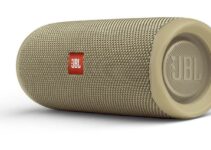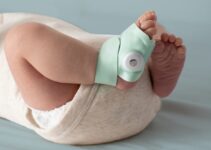Signia Hearing aids are complex devices that can malfunction for a variety of reasons. Knowing what to do when that happens is necessary to ensure you’re back to using the device in no time.
This guide will cover common troubleshooting steps for Signia hearing aids to help you resolve any issues you may be experiencing.
Signia Hearing Aid Troubleshooting: Common Problems & Fixes

1. Battery Issues
- Make sure the battery is inserted correctly and that the tab has been removed. If the battery is not inserted correctly, the hearing aid will not turn on.
- If the battery is low, replace it with a fresh one. A low battery can cause the hearing aid to turn off or not turn on at all.
- If the hearing aid still won’t turn on, try cleaning the battery compartment and the contacts on the battery with a dry cloth. Sometimes, the contacts may have a buildup of dirt or debris that prevents a proper connection between the battery and the hearing aid.
2. Sound Quality Issues
- Check to make sure the hearing aid is properly seated in your ear. If the hearing aid is not seated correctly, it may not be pointing in the right direction to pick up sound, resulting in poor sound quality.
- Make sure the volume is turned up. It’s easy to accidentally turn down the volume on your hearing aid and not realize it.
- Clean the hearing aid and the earmold or dome with a dry cloth. Earwax and other debris can accumulate on the hearing aid and earmold or dome, which can affect sound quality.
- Check the tubing for any blockages and replace if necessary. The tubing can become clogged with earwax, which can affect sound quality.
- Make sure the hearing aid is set to the appropriate program. Each hearing aid program is designed for specific listening situations, so it’s important to make sure you’re using the right one.
3. Connectivity Issues
- Make sure the hearing aid is properly paired with the device you are trying to connect to. If the hearing aid is not properly paired, it will not connect to the device.
- Check the range between the hearing aid and the device you are trying to connect to. If the devices are too far apart, the connection may be lost.
- Make sure the device you are trying to connect to is in pairing mode. The device must be in pairing mode for the hearing aid to connect to it.
- Check the hearing aid’s firmware version and update if necessary. Outdated firmware can prevent the hearing aid from connecting to other devices.
4. Malfunctions
- Make sure the hearing aid is turned on. It’s easy to accidentally turn off the hearing aid and not realize it.
- Check the battery and replace if necessary. A low or dead battery can cause the hearing aid to malfunction.
- Clean the hearing aid and the earmold or dome with a dry cloth. Earwax and other debris can accumulate on the hearing aid and earmold or dome, which can cause malfunctions.
- Check the tubing for any blockages and replace if necessary. The tubing can become clogged with earwax, which can cause malfunctions.
- Check the hearing aid’s firmware version and update if necessary. Outdated firmware can cause malfunctions.
- If the issue persists, contact your hearing healthcare professional or Signia customer service on the issue. They may be able to diagnose and fix the issue or determine if the hearing aid needs to be repaired or replaced.
5. Feedback Issues
- Check to make sure the hearing aid is properly seated in your ear. If the hearing aid is not seated correctly, it may not be pointing in the right direction to pick up sound, resulting in feedback.
- Make sure the volume is not too high. High volume levels can cause feedback.
- Clean the hearing aid and the earmold or dome with a dry cloth. Earwax and other debris can accumulate on the hearing aid and earmold or dome, which can affect sound quality and cause feedback.
- Check the tubing for any blockages and replace if necessary. The tubing can become clogged with earwax, which can affect sound quality and cause feedback.
- Consider using a different size or type of earmold or dome. Sometimes, a different size or type of earmold or dome can reduce or eliminate feedback.
6. Programming Issues
- Check the hearing aid’s settings and make sure they are correct for your hearing needs. Sometimes, the hearing aid may be set to a program that is not appropriate for your hearing loss or the listening situation.
- Consult with your hearing healthcare professional to reprogram the hearing aid if necessary. They can help you select the appropriate program and settings for your hearing needs and listening situation.
- Check the hearing aid’s firmware version and update it if necessary. Outdated firmware can prevent the hearing aid from functioning correctly.
7. Water Damage
- Remove the hearing aid immediately and dry it off with a towel.
- Remove the battery and let the hearing aid dry completely before reinserting the battery.
- Avoid using a hair dryer or other heating device to dry the hearing aid as this can damage the internal components.
- If the hearing aid does not turn on after it has been dried, contact Signia customer service or your hearing healthcare professional for support. They may be able to diagnose and fix the issue or determine if the hearing aid needs to be repaired or replaced.
Conclusion
Keep in mind that these are general troubleshooting steps and may not be specific to your particular hearing aid model. If you are experiencing an issue with your Signia hearing aid that is not covered in this guide, or if these steps do not resolve your issue, reach out to Signia customer service or your hearing healthcare professional. They can help you diagnose and fix the issue or determine if the hearing aid needs to be repaired or replaced.








